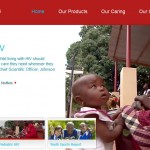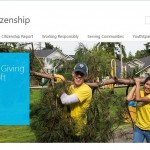The Boeing Company is an American multinational corporation that designs, manufactures, and sells fixed-wing aircraft, rotorcraft, rockets and satellites. It also provides leasing and product support services. Boeing is among the largest global aircraft manufacturers, is the second-largest aerospace & defense contractor in the world based on 2012 revenue and is the largest exporter in the United States by dollar value. Boeing stock is a component of the Dow Jones Industrial Average.
The Boeing Company’s corporate headquarters are located in Chicago and the company is led by Chairman and CEO James McNerney. Boeing is organized into five primary divisions: Boeing Commercial Airplanes (BCA); Boeing Defense, Space & Security (BDS); Engineering, Operations & Technology; Boeing Capital; and Boeing Shared Services Group. In 2013, Boeing recorded $86.623 billion in sales, ranked 30th on the Fortune magazine “Fortune 500” list (2013), ranked 95th on the “Fortune Global 500” list (2013), and ranked 26th on the “World’s Most Admired Companies” list (2013).
In March 1910, William E. Boeing bought Heath’s shipyard in Seattle on the Duwamish River, which later became his first airplane factory. Boeing was incorporated in Seattle by William Boeing, on July 15, 1916, as “Pacific Aero Products Co.”. Boeing, who studied at Yale University, worked initially in the timber industry, where he became wealthy and learned about wooden structures. This knowledge proved invaluable in his subsequent design and assembly of airplanes. The company stayed in Seattle to take advantage of the local supply of Spruce wood.
William Boeing founded his company a few months after the June 15 maiden flight of one of the two “B&W” seaplanes built with the assistance of George Conrad Westervelt, a U.S. Navy engineer. Boeing and Westervelt decided to build the B&W seaplane after having flown in a Curtiss aircraft. Boeing bought a Glenn Martin “Flying Birdcage” seaplane (so called because of all the guy-wires holding it together) and was taught to fly by Glenn Martin himself. Boeing soon crashed the Birdcage and when Martin informed Boeing that replacement parts would not become available for months, Boeing realized he could build his own plane in that amount of time. He and his friend Cdr. G.C. Westervelt agreed to build a better airplane and soon produced the B&W Seaplane. This first Boeing airplane was assembled in a lakeside hangar located on the northeast shore of Seattle’s Lake Union. Many of Boeing’s early planes were seaplanes.
On May 9, 1917, the company became the “Boeing Airplane Company”. In late 1917, the U.S. entered World War I and Boeing knew that the U.S. Navy needed seaplanes for training. So Boeing shipped two new Model Cs to Pensacola, Florida where the planes were flown for the Navy. The Navy liked the Model C so much that they ordered fifty more. The company moved its operations to a larger former shipbuilding facility known as Boeing Plant 1, located on the lower Duwamish River.
When World War I ended in 1918, a large surplus of cheap, used military planes flooded the commercial airplane market, and this prevented aircraft companies like Boeing from selling any new airplanes. Because of this, many airplane companies went out of business, but other companies, including Boeing, started selling other products. Boeing built dressers, counters, and furniture, along with flat-bottom boats called Sea Sleds.
In 1919 the Boeing B-1 made its first flight. It was a flying boat that accommodated one pilot and two passengers and mail. Over the course of eight years, it made international airmail flights from Seattle to Victoria, British Columbia. On May 24, 1920, the Boeing Model 8 made its first flight. It was the first plane to fly over Mount Rainier.
In 1923, Boeing began a competition against Curtiss for a contract to develop a pursuit fighter for the U.S. Army Air Service. Although Curtiss finished its design first and was awarded the contract, Boeing continued to develop its PW-9 fighter. That plane, along with the Boeing P-12/ F4B fighter, made Boeing a leading manufacturer of fighters over the course of the next decade.
In 1925, Boeing built its Model 40 mail plane for the U.S. government to use on airmail routes. In 1927, an improved version of this plane was built, the Model 40A which won the U.S. Post Office’s contract to deliver mail between San Francisco and Chicago. The 40A also had a passenger cabin that accommodated two passengers.
That same year, Boeing created an airline named Boeing Air Transport, which merged a year later with Pacific Air Transport and the Boeing Airplane Company. The first airmail flight for the airline was on July 1, 1927. The company changed its name to United Aircraft and Transport Corporation in 1929 and acquired Pratt & Whitney, Hamilton Standard Propeller Company, and Chance Vought. United Aircraft then purchased National Air Transport in 1930.
On July 27, 1928, the 12-passenger Boeing 80 biplane made its first flight. With three engines, it was Boeing’s first plane built with the sole intention of being a passenger transport. An upgraded version, the 80A, carrying eighteen passengers, made its first flight in September 1929.
Boeing offers generous matching programs for employees to increase their positive community impact through charitable donations, volunteer hours and participation in fundraising walks. The three match programs can be used alone or in combination for a maximum match of $6,000 per employee per year to eligible organizations.
Boeing offers employees a 1:1 match for personal donations of cash or stock to eligible charitable organizations (retirees receive a 0.5:1 match). The minimum gift amount per organization is $25.
The hours Boeing employees spend donating time and skills to eligible non-profits can also be matched with dollars, giving an added benefit to their favorite community organizations. For every 25 hours of volunteer service an employee gives to an approved organization, Boeing will donate $250 to that organization.
Boeing offers a match program based on employee participation in cause-related walks/runs/bike events to recognize and reward the dual benefits of employee community involvement with health and wellness. For each approved event an employee completes, the approved cause-related non-profit organization is eligible for a $100 contribution from Boeing. There is no limit to the number of walks an employee can complete each year, receiving the $100 donation for each. All match programs contribute toward an individual’s combined maximum of $6,000 matched annually.
January 31: Employee must submit gift match request no later than January 31 in the year following their contribution/participation.
April 15: Non-profit must verify employee submission and provide requested compliance information no later than April 15 in year following request.
Payments of matching gifts occur bi-annually after the close of these quarters. Boeing Donates Under 501C3.
The list of eligible organizations for Monetary Gift Match includes the following types of nonprofit organizations: arts and culture; education; environment, including wildlife preservation organizations; and civic-based organizations. Volunteer and Walk Match programs include the above types of nonprofits plus Health and Human Services organizations. Nonprofits must be recognized by the IRS as a §501(c)(3); educational institutions must be accredited by the appropriate accrediting bodies. This applies to nonprofits in the United States only.
Whether an organization is eligible to receive matching funds is determined solely by The Boeing Company on an individual basis. Organizations applying for matching funds for the first time are required to provide certain information before their eligibility may be determined. The program is required to be in compliance with IRS regulations, the USA Patriot Act, as well as Executive Order 13224. To ensure this compliance, organizations must provide compliance information including tax ID (FEIN or NCES code) and the names of the governing-board before being eligible for inclusion in the program.
Please note that there are restrictions on the ways an otherwise eligible organization may use matching funds it receives. Employees should not direct that matching funds be used for a prohibited purpose. The following are examples of matching funds that are prohibited:
To pay an individual’s tuition or tithe, To pay for an individual’s travel, including school-sponsored travel or field trips, To pay dues, subscriptions, insurance premiums or student fees.


